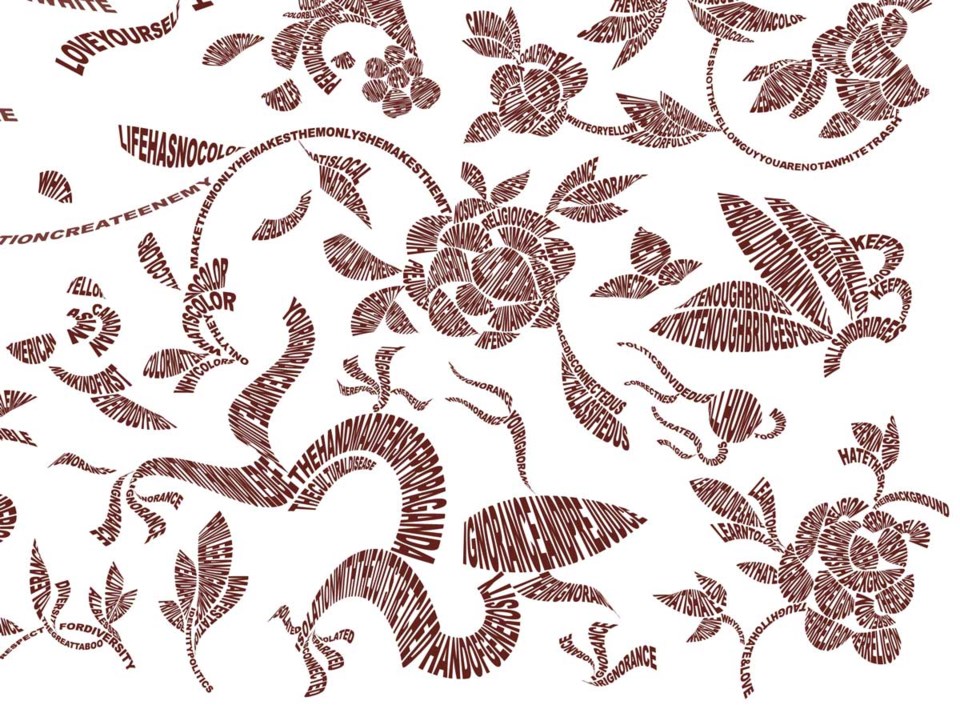Beauty can be a mask for ugliness – and sometimes you have to stare into the ugliness in order to rise above it.
This is one of the messages conveyed in the artwork of Tsang Kin-Wah, which will be installed this week on the Vancouver Art Gallery’s Howe Street façade and at its off-site location on West Georgia Street, to remain in place until October.
From across the street or at a passing glance, Tsang’s vinyl installation is decorative and pleasing: large-scale floral and animal patterns, including a dragon on Howe Street and a spiraling vine at the off-site location.
But take a closer look at the flora and fauna and you’ll see that the figures are actually words, and that the words are jarring and ugly: discriminatory language that appeared in newspapers and political campaigns in Vancouver during the 1887 anti-Chinese riots, the mid-1980s Hong Kong immigration wave and, most recently, the heated exchanges around foreign buyers and the local housing market.
This deceptively decorative artwork is par for the course for Tsang, who was born in China, moved to Hong Kong as a young child, and was educated in Asia and England. Tsang’s work – which has been exhibited in numerous solo and group exhibitions throughout Europe, Asia and the United States – combines foul language with beautiful patterns to confront the reality of ignorance that often exists within cities that boast of their multiculturalism and diversity.
The purpose of this work is to “bring the hidden voices to the surface, and let the audience realize that those kind of opinions exist in society and we have to face it,” says Tsang in a recent phone interview. “Otherwise they stay hidden and we risk only seeing them when something bad happens.”

Tsang had only visited Vancouver on one occasion before creating his new work, at the behest of VAG associate curator of Asian art Diana Freundl, but notes that Vancouver is “quite famous and popular” in his hometown. “I know that a lot of people [from Hong Kong] have moved to Vancouver for their retirement and a lot of second-generation kids come back to Hong Kong,” says Tsang. Thus, Vancouver “sounds very familiar.”
Tsang wasn’t surprised to discover that racism rears its ugliness in the Lower Mainland, despite finding Vancouverites “very nice.” He’s seen it in the other so-called multicultural cities in which he’s lived, worked, and exhibited, including London and New York. Racism occurs whenever people are closed-minded, he says – and his work exists to challenge those shuttered minds.
When Tsang began researching his Vancouver work a couple of years ago, he was focused solely on topics related to Chinese immigration and racism; but, as time went on, he says other influences seeped into his work. “It’s a very tricky time that we bring this topic to Vancouver, and a crucial moment, because a lot of things seem to be changing in North America, in Europe and some areas in Asia with regards to racism and protectionism,” says Tsang. “When I was making the work and writing the text, I was trying to stick to that Asian immigrant issue, but I feel like I was affected by things like the election of Donald Trump, and that’s the reason that I feel like my work touches on those issues in a certain way.”


